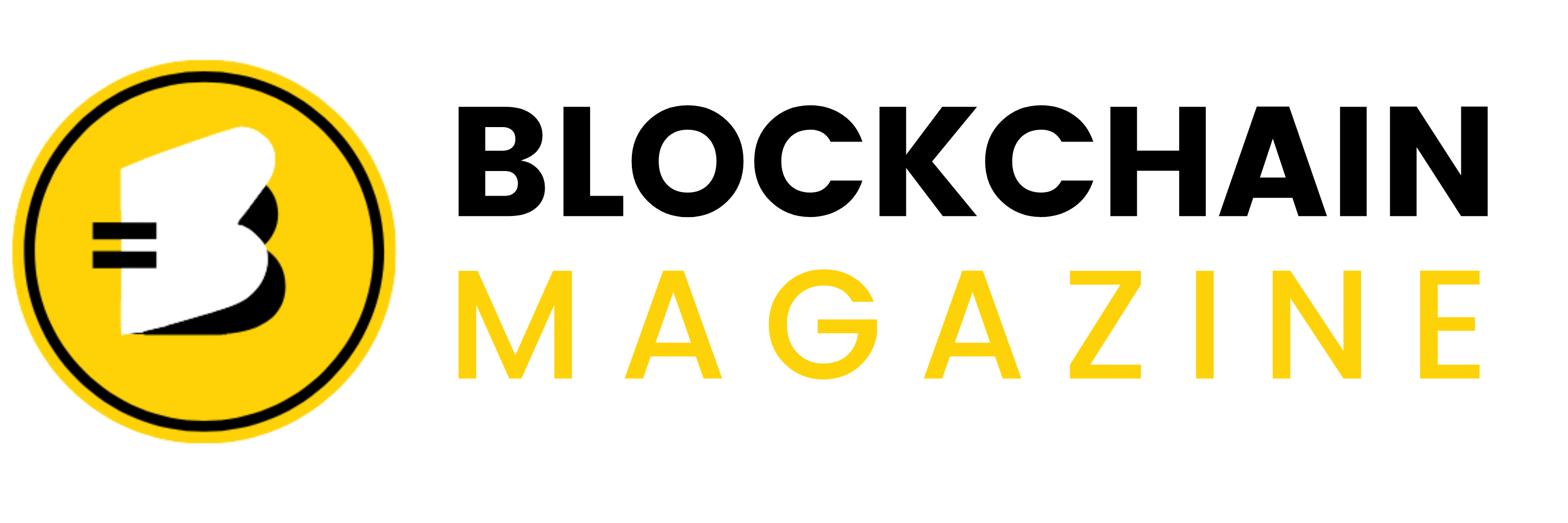Understanding the Leading Crypto Coin by Market Cap: Insights and Trends for 2025
In 2025, the cryptocurrency market is buzzing with activity and change. Bitcoin, still the big player, is making waves with its market cap. But it’s not just Bitcoin; Ethereum and other altcoins are expanding their reach. Stablecoins are quietly becoming the backbone of decentralized finance, offering stability in a volatile market. Regulations are shifting, bringing both challenges and opportunities. Technology is pushing boundaries with AI and blockchain advancements. As we look to the future, the crypto landscape is full of potential and pitfalls.
Key Takeaways
- Bitcoin remains the leading crypto coin by market cap, influencing market trends.
- Ethereum and altcoins are growing, with significant ecosystem updates and market presence.
- Stablecoins like USDT and USDC are crucial for DeFi, providing liquidity and stability.
- Regulatory changes in 2025 will shape the crypto market, impacting policies and operations.
- Technological innovations, including AI and blockchain scalability, are transforming the crypto space.
The Rise of Bitcoin: Dominance and Influence
Bitcoin’s Market Cap Surge
In 2025, Bitcoin started the year with a bang, trading above its all-time high at over $108,000. This surge wasn’t just a fluke. Bitcoin’s dominance in the cryptocurrency market hit a staggering 59% by late January, reflecting its growing influence. The rising demand for Bitcoin, driven by ETFs, has significantly impacted its dominance, making it a focal point for both seasoned and new investors.
Here’s a quick look at Bitcoin’s recent numbers:
| Metric | Value |
|---|---|
| Current Price | $108,000+ |
| Market Cap | $1.9 trillion |
| Circulating Supply | ~20 million BTC |
Impact of Bitcoin ETFs on Market Dynamics
The introduction and growth of Bitcoin ETFs have changed the game. These financial products have opened the doors for institutional investors, bringing in large amounts of capital and increasing market liquidity. This has not only boosted Bitcoin’s price but also solidified its role as a key asset in diversified portfolios.
- Increased Institutional Interest: ETFs have made it easier for big players to invest in Bitcoin, driving up demand.
- Enhanced Market Stability: With more institutional money, the market has seen less volatility.
- Broader Acceptance: ETFs have helped legitimize Bitcoin in the eyes of traditional investors.
Bitcoin’s Role in Global Economic Policies
Bitcoin’s influence isn’t just limited to market dynamics; it’s also making waves in global economic policies. The U.S. administration, for instance, has proposed a Strategic Bitcoin Reserve, aiming to incorporate Bitcoin into national economic strategies. This move highlights Bitcoin’s potential as a hedge against inflation and a tool for financial diversification.
The interplay between political support and market forces has been pivotal in Bitcoin’s ascent. As governments and financial institutions continue to explore Bitcoin’s potential, its role in the global economy is poised to grow even further.
Bitcoin’s journey from a niche digital asset to a cornerstone of the financial world is nothing short of remarkable. As we move further into 2025, its influence is set to expand, shaping both markets and policies worldwide.
Ethereum and Altcoins: Expanding Horizons
Ethereum’s Ecosystem Updates
Ethereum’s journey through 2025 is marked by significant milestones. The “Pectra upgrade” has been a game-changer, boosting Ethereum’s scalability and efficiency. With Layer 2 solutions like Arbitrum and Optimism, Ethereum is tackling its longstanding congestion issues, making it more attractive for decentralized applications (dApps) and DeFi projects. Despite facing stiff competition from faster alternatives like Solana, Ethereum remains a powerhouse due to its adaptability and vast developer network. As the year progresses, Ethereum’s price is projected to range between $2,670 and $5,990, influenced by bullish market trends.
The Growing Influence of Solana and Cardano
Solana and Cardano are making waves in the crypto space. Solana’s high-speed blockchain and low transaction costs have made it a favorite among developers and investors. Its ecosystem continues to grow, with new projects and partnerships emerging regularly. On the other hand, Cardano focuses on sustainability and scalability, positioning itself for long-term success. Its emphasis on research-driven development and peer-reviewed upgrades ensures that it remains a key player in the altcoin market. Together, Solana and Cardano are expanding the horizons for altcoins, offering diverse options for investors.
Altcoin Market Trends and Predictions
The altcoin market is gearing up for a significant rally. Excluding the top 10 cryptocurrencies, the market cap is expected to grow to $1.6 trillion, driven by increased investor interest and regulatory clarity. A “cup and handle” pattern is testing the $370 billion resistance level, and a successful breakout could trigger a 317% rally. This anticipated altcoin season, fueled by the approval of additional crypto ETFs and innovations like real-world asset tokenization, presents substantial opportunities for diversification and innovation within the crypto ecosystem.
The evolving landscape of altcoins is reshaping the investment landscape, offering new opportunities and reducing reliance on top-tier cryptocurrencies. As we move through 2025, the crypto market is set to become more diverse and dynamic, driven by technological advancements and strategic partnerships.
Stablecoins: The Backbone of DeFi
Role of USDT and USDC in DeFi
Stablecoins like USDT and USDC are the unsung heroes of the DeFi world. They provide a stable medium of exchange in a market known for its wild swings. These coins are pegged to the U.S. dollar, giving them a reliability that’s hard to find in other cryptocurrencies. As a result, they’re heavily used for lending, borrowing, and trading within DeFi platforms. This stabilizing role helps minimize risks and makes DeFi more accessible to everyday users.
Stablecoin Liquidity and Market Stability
Stablecoins have become a fundamental settlement layer in digital finance, with their supply expected to double, surpassing $400 billion by the end of 2025. This growth is fueled by their increasing use in payments, remittances, and as a hedge against volatile local currencies. Their liquidity ensures that users can quickly and efficiently move funds across platforms, which is crucial for maintaining market stability.
Regulatory Focus on Stablecoins in 2025
The regulatory landscape for stablecoins is evolving. In 2025, new legislation is expected to formalize oversight for stablecoin issuers in the U.S., providing a clearer framework for their operation. This regulatory clarity is anticipated to boost adoption, as it will encourage traditional financial institutions to integrate stablecoins into their systems. However, inconsistent regulations across different regions might pose challenges, potentially slowing down growth in areas with stricter rules.
As stablecoins continue to weave themselves into the fabric of global finance, they offer both opportunities and challenges. Their ability to provide stability in a volatile market makes them an attractive option for both individual users and large financial institutions.
Regulatory Changes and Their Impact on the Crypto Market
Pro-Crypto Policies Under the New Administration
With the shift in the U.S. administration, there’s a fresh breeze blowing through the crypto world. Donald Trump’s presidency has ushered in a new era of cryptocurrency regulations that are more supportive of digital assets. The appointment of Mark Uyeda as Acting Chair of the SEC marks a significant departure from the aggressive stance of the past. Uyeda’s decision to lift certain restrictions, like the SAB 121 rule, is already making waves by allowing banks to offer crypto custody services. This move is expected to provide the much-needed “breathing room” for altcoins and crypto firms to thrive.
SEC’s Evolving Stance on Cryptocurrencies
The SEC’s new leadership is taking a less confrontational approach towards cryptocurrencies. This change is crucial as it aims to strike a balance between regulation and innovation. The previous “shoot first, ask questions later” method often stifled growth and innovation in the crypto space. Now, with a focus on creating a clearer and less restrictive regulatory framework, the SEC is paving the way for a more predictable and stable crypto market environment.
Global Regulatory Trends and Their Implications
Globally, the regulatory landscape is a mixed bag, with some regions embracing crypto-friendly policies while others remain cautious. The European Union’s Markets in Crypto-Assets Regulation (MiCA) is a prime example of an effort to create a unified regulatory framework. However, the global scene is still fragmented, leading to challenges for businesses operating across borders. These differences can either hinder or help the growth of cryptocurrencies, depending on how adaptable and compliant firms can be. As regulations continue to evolve, staying informed and agile will be key for navigating these changes successfully.
As the crypto market matures, regulatory clarity becomes a double-edged sword. While it can curb the wild west nature of the industry, it also holds the potential to unlock new opportunities for growth and innovation. The coming years will be a test of how well the crypto world can adapt to these changes, maintaining its core values of decentralization and transparency while complying with legal standards.
Technological Innovations Shaping the Future of Crypto
AI Integration in Cryptocurrency Platforms
Artificial Intelligence is making waves in the crypto world, and it’s not just a buzzword anymore. AI-driven bots are changing how trading is done, offering insights and executing trades faster than humans can. These bots analyze market trends and sentiments, helping investors make informed decisions. Imagine a world where your trading strategy is constantly optimized by AI—it’s happening now. Beyond trading, AI is being used to enhance security measures, ensuring that platforms are safe from cyber threats.
Real-World Asset Tokenization
Tokenization is transforming how we think about ownership and investment. Real-world assets like real estate and fine art are becoming more accessible through blockchain technology. By tokenizing these assets, investors can own fractions of high-value items, democratizing access to investments that were once reserved for the wealthy. This shift is not just about accessibility; it also brings liquidity to traditionally illiquid markets.
Advancements in Blockchain Scalability
Scalability has been a long-standing issue in blockchain technology, but innovations are on the horizon. Layer-two solutions and sharding are being developed to handle increased transaction volumes without sacrificing speed or efficiency. These advancements are crucial for the widespread adoption of cryptocurrencies, as they ensure that blockchain networks can support a growing number of users and transactions.
As we move forward, it’s clear that technological innovations are not just enhancing the crypto space but are essential for its survival and growth. With AI, tokenization, and scalability improvements, the future of crypto looks promising and more integrated into our daily lives.
Challenges and Opportunities in the 2025 Crypto Landscape
Navigating Market Volatility
The crypto market, known for its wild price swings, continues to keep investors on their toes. In 2025, market volatility remains a key concern, fueled by global economic uncertainties like inflation and interest rate hikes. These factors can cause drastic shifts in investor sentiment, impacting crypto prices. Investors are learning to adapt by diversifying their portfolios and employing risk management strategies to cushion against sudden downturns.
Institutional Adoption and Its Effects
Institutional interest in cryptocurrencies has surged, bringing both stability and scrutiny to the market. Large-scale investments by corporations and financial institutions have introduced a level of legitimacy, yet they also bring regulatory challenges. As institutions demand clearer frameworks, governments worldwide are pressured to respond, potentially reshaping the landscape. This trend could lead to more defined and possibly restrictive regulations, affecting how cryptocurrencies are traded and utilized.
The Role of Memecoins in the Market
Memecoins, often seen as a joke, have surprisingly carved out a niche in the crypto world. Their unpredictable nature and viral appeal attract a unique segment of investors. While they can lead to quick profits, they also pose significant risks due to their speculative nature. As the market matures, the role of memecoins is evolving, with some gaining utility beyond mere speculation. Investors are increasingly cautious, weighing the potential for high returns against the inherent volatility and lack of underlying value.
The 2025 crypto landscape is a blend of excitement and caution. As the market matures, the balance between innovation and regulation will be crucial in shaping its future. Investors and developers alike must stay informed and adaptable to thrive in this dynamic environment.
In conclusion, 2025 presents a unique set of challenges and opportunities for the cryptocurrency market. By understanding and navigating these dynamics, stakeholders can position themselves to capitalize on the evolving trends while mitigating potential risks.
Conclusion
So, here we are, looking at the crypto world in 2025. It’s been a wild ride, hasn’t it? Bitcoin’s still the big boss, and it seems like it’s not going anywhere soon. With its price shooting up and more big names jumping on board, it’s clear that Bitcoin’s got some staying power. But it’s not just about Bitcoin. Other coins are making waves too, and who knows what the future holds for them? The market’s changing fast, with new tech and regulations popping up all the time. It’s a lot to keep up with, but that’s what makes it exciting. As we move forward, it’ll be interesting to see how these trends play out and what new surprises the crypto world has in store for us. One thing’s for sure, though: crypto’s here to stay, and it’s only going to get more interesting from here.
Frequently Asked Questions
What is Bitcoin’s market cap?
Bitcoin’s market cap is the total value of all its coins in circulation. It’s calculated by multiplying the current price of one Bitcoin by the total number of Bitcoins available.
How do Bitcoin ETFs affect the market?
Bitcoin ETFs allow people to invest in Bitcoin without owning it directly. This can increase demand and influence Bitcoin’s price and market dynamics.
What makes Ethereum different from Bitcoin?
Ethereum is not just a digital currency like Bitcoin. It also allows developers to build applications on its blockchain, making it more versatile.
Why are stablecoins important in crypto?
Stablecoins are digital currencies tied to stable assets like the US dollar. They help keep prices steady and are widely used in decentralized finance (DeFi).
How can regulations impact cryptocurrencies?
Regulations can affect how cryptocurrencies are traded, their value, and how widely they are used. They can either help or hinder the market’s growth.
What are some challenges for crypto in 2025?
Challenges include dealing with market ups and downs, ensuring security, and adapting to new rules and technologies.
Stay informed with daily updates from Blockchain Magazine on Google News. Click here to follow us and mark as favorite: [Blockchain Magazine on Google News].
Get Blockchain Insights In Inbox
Stay ahead of the curve with expert analysis and market updates.
latest from tech
Disclaimer: Any post shared by a third-party agency are sponsored and Blockchain Magazine has no views on any such posts. The views and opinions expressed in this post are those of the clients and do not necessarily reflect the official policy or position of Blockchain Magazine. The information provided in this post is for informational purposes only and should not be considered as financial, investment, or professional advice. Blockchain Magazine does not endorse or promote any specific products, services, or companies mentioned in this posts. Readers are encouraged to conduct their own research and consult with a qualified professional before making any financial decisions. The featured image used is just a creative depiction of the title and it does not intend to hurt sentiments of any person or institution. If it hurts anyone sentiments, please do not hesitate to reach out to Blockchain Magazine.

 Bitcoin
Bitcoin  Ethereum
Ethereum  XRP
XRP  Tether
Tether  Solana
Solana  USDC
USDC  Dogecoin
Dogecoin  Cardano
Cardano  Lido Staked Ether
Lido Staked Ether  TRON
TRON  Wrapped Bitcoin
Wrapped Bitcoin  Chainlink
Chainlink  Wrapped stETH
Wrapped stETH  Sui
Sui  Avalanche
Avalanche  Stellar
Stellar  Litecoin
Litecoin  LEO Token
LEO Token  Toncoin
Toncoin  Shiba Inu
Shiba Inu  Hedera
Hedera  USDS
USDS  Hyperliquid
Hyperliquid  Polkadot
Polkadot  WETH
WETH  MANTRA
MANTRA  Bitcoin Cash
Bitcoin Cash  Ethena USDe
Ethena USDe  Bitget Token
Bitget Token  Wrapped eETH
Wrapped eETH  Uniswap
Uniswap  Monero
Monero  WhiteBIT Coin
WhiteBIT Coin  NEAR Protocol
NEAR Protocol  Pepe
Pepe  Bittensor
Bittensor  Aave
Aave  Aptos
Aptos  Ondo
Ondo  Dai
Dai  Internet Computer
Internet Computer  Official Trump
Official Trump  Ethereum Classic
Ethereum Classic  Tokenize Xchange
Tokenize Xchange  Mantle
Mantle  OKB
OKB  Gate
Gate  sUSDS
sUSDS  Sonic (prev. FTM)
Sonic (prev. FTM) 






